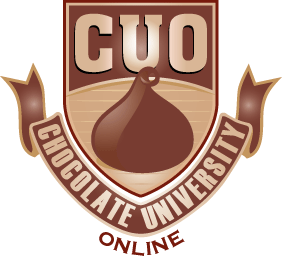Fair Trade Chocolate
Chocolate is forever awesome. But of course, we have to be aware of the production practices. Farming methods and the impact on the environment are things that could have remarkable impact on the future of cacao production. Labor practices question the involvement of children in the potentially dangerous harvesting of cacao pods. Can you stomach the thought of children being exploited just so you could enjoy your bar of chocolate?
Categories: chocolate videos Tags: awesome, cacao production, dangerous, ethical chocolate, Fair Trade Chocolate, Fair Trade products, production
I Scream, You Scream, We All Scream For Ice Cream
Ice cream is usually dubbed as “The Greatest American Dessert.” Even though this product is typically American, the United States cannot claim its origin and source.
Ice cream is defined as a frozen dairy dessert made from cream or milk, usually combined and manufactured along with other flavors and fruits. More often than not, it contains sugar. Sometimes, other sweeteners are used.
The ingredients are slowly stirred while the product is cooled down. This lets air be integrated and keeps the formation of ice crystals. The outcome will be a smooth, semi-solid foam that is extremely malleable and can be scooped easily. Drool now!
Little is known about the early history of ice cream, but this treat is said to originate in Europe. Now, the United States has been the lead among all the countries in the large and intense production of ice cream.
Before the advent of the today’s refrigeration, ice cream was a mere luxury that was intended to be eaten only on special occasions. It had to be produced with a source of ice, often cut from lakes and ponds at winter. The ice was stored in the ground, say, in brick ice houses and was insulated by straw.
In the past, the ice cream industry grew at a slower pace than it is today. Until 1900s, the total American output of ice cream didn’t go beyond 30 million gallons annually.
The yearly manufacturing and production of it has been working its way up on a steady and exponential rate with the introduction of hard and soft ice cream, nowadays produced at more than a billion gallons a year. In accordance with the International Dairy Foods Association, “approximately 1.53 billion gallons of ice cream and related frozen desserts were produced in the U.S. in 2011.” Stunning, eh?
This just means that the annual per capital consumption is not less than 20 pounds. Additionally, this means that 9% of total milk production goes to the ice cream industry.
Where’s the chocolate in this article? It’s here, yep it’s here now. Chocolate ice cream is always near the top in flavors. Vanilla always wins. That’s the sad ending.
Categories: chocolate articles Tags: Chocolate History, chocolate ice cream, cream, ice.cream, means, production, today
Ethical Chocolate
You probably haven’t given it any thought before. In our chocolate classes, two important lessons include “Responsible Cacao Farming” and “Preventing Exploitation in the Chocolate Industry.”
However, answering such tricky question is… tricky. Chocolates have always been associated with many different cultures, holidays, and certain celebrations.
There are chocolate birthday cakes, chocolate eggs for Easter, chocolates for Valentine’s Day, and even chocolate bars for Halloween. These are just some of those occasions tied to chocolate.
It all boils down to the fact chocolate is really fun, a highlight in any occasion, so fun that we pack on pounds of it every year.
Like presented above, with reference to the question being asked as we our own classes, chocolate is usually linked to several environmental and human rights matters. In some cases these subjects are deemed taboo, “don’t tell me that, I just want to enjoy my chocolate.”
Of course there are different degrees of quality. It’s a big factor to considered to some people. While with others, any chocolate is chocolate, and chocolate is always delish.
How about the ingredient list? Some people would like to dodge certain products for allergy or sensitivity reasons. Others zero in on the percentages of chocolate versus sugar.
There are also other factors on the label, such as fair trade or organic. While these may have acquired a less than optimal flavor reputation some years back, today it’s no big deal.
Then there’s the price. Are you willing to try that $7.00 chocolate bar, or is is $1.00 your limit? Or somewhere in between? Your price tolerance will be your guiding light in your tasting experience.
Of course, we have to be aware of the production practices. Farming methods and the impact on the environment are things that could have remarkable impact on the future of cacao production. Labor practices question the involvement of children in the potentially dangerous harvesting of cacao pods. Can you stomach the thought of children being exploited just so you could enjoy your bar of chocolate?
These are all issues that need some questioning since chocolate is part of the food industry that sustains the world through production and employment. We all want our chocolate forever, don’t we?
Categories: chocolate articles Tags: always, cacao production, classes, ethical chocolate, Ethics, price, production




